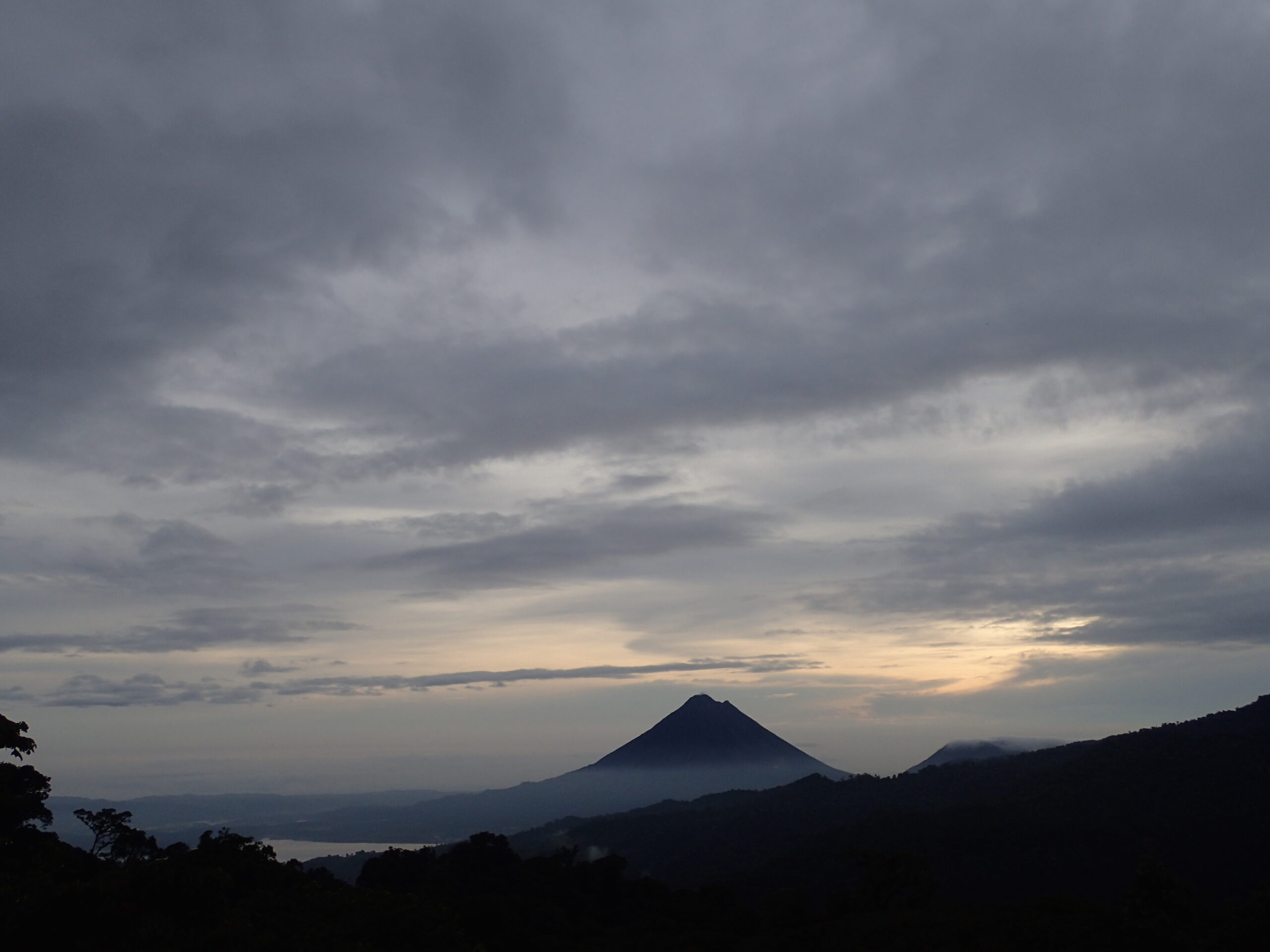
Moss: On the Rocks
“Diversity and richness of mosses and liverworts in boulder habitats”
Rose Barfield1, Amelia Merced2, and Amanda T. Rugenski1
1Odum School of Ecology, University of Georgia,2International Institute of Tropical Forestry, USDA-FS, San Juan, Puerto Rico
Introduction
- Liverworts, hornworts, and mosses are the three taxonomic divisions that make up the phylum Bryophyta.
- There are estimated to be about 120 families of bryophytes in tropical America and around 28 families in Costa Rica.
- Neotropical forests contain almost one-third of the world’s bryophyte diversity, along with 50% of the region’s moss species. This high diversity is attributed to the tropical forests’ microclimates.
Objective and Hypothesis
- Identify the various species of mosses and liverworts living on boulders in riparian and forest habitats.
- We hypothesized that the proportion of liverwort vs. moss species on boulders will differ in riparian and non-riparian habitats due to differences in their microclimates.
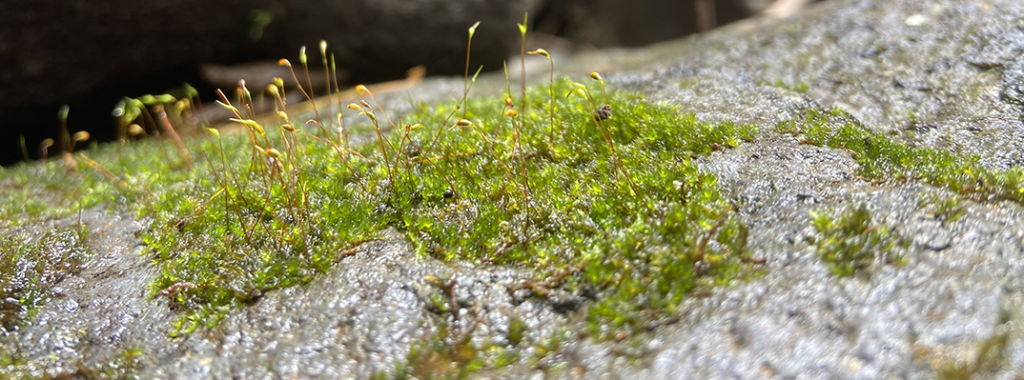
Methods
- We selected 3 sites on the CIEE campus in San Luis de Monteverde, Costa Rica
- Quebrada Alondra (riparian 10 boulders measured)
- Quebrada Bruja (riparian 10 boulder measured)
- Camino Real (Forest, 10 boulders measured)
- For each boulder, we measured the surface area (a-axis and b-axis measurements) and took a photo of each species.
- Using the photographs taken in the field, we identified the bryophytes to family and then genus and species if possible.
- We recorded the number of liverwort and moss families and the subsequent total family richness present for each boulder.

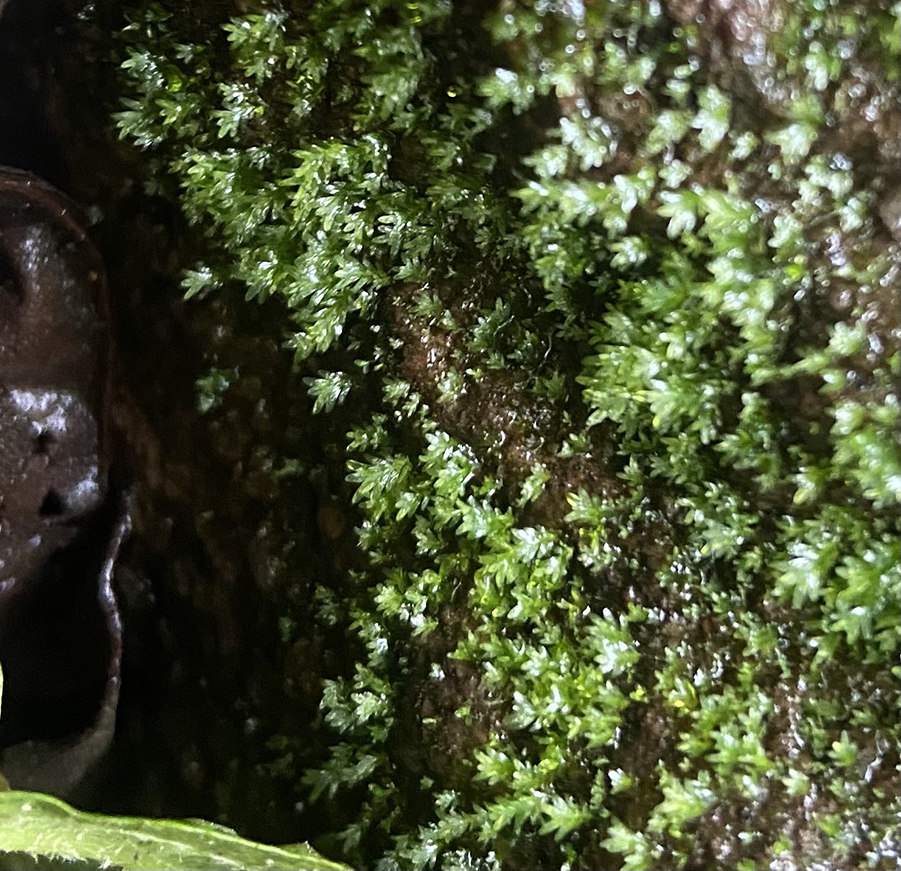
(Fissidens bryoides)
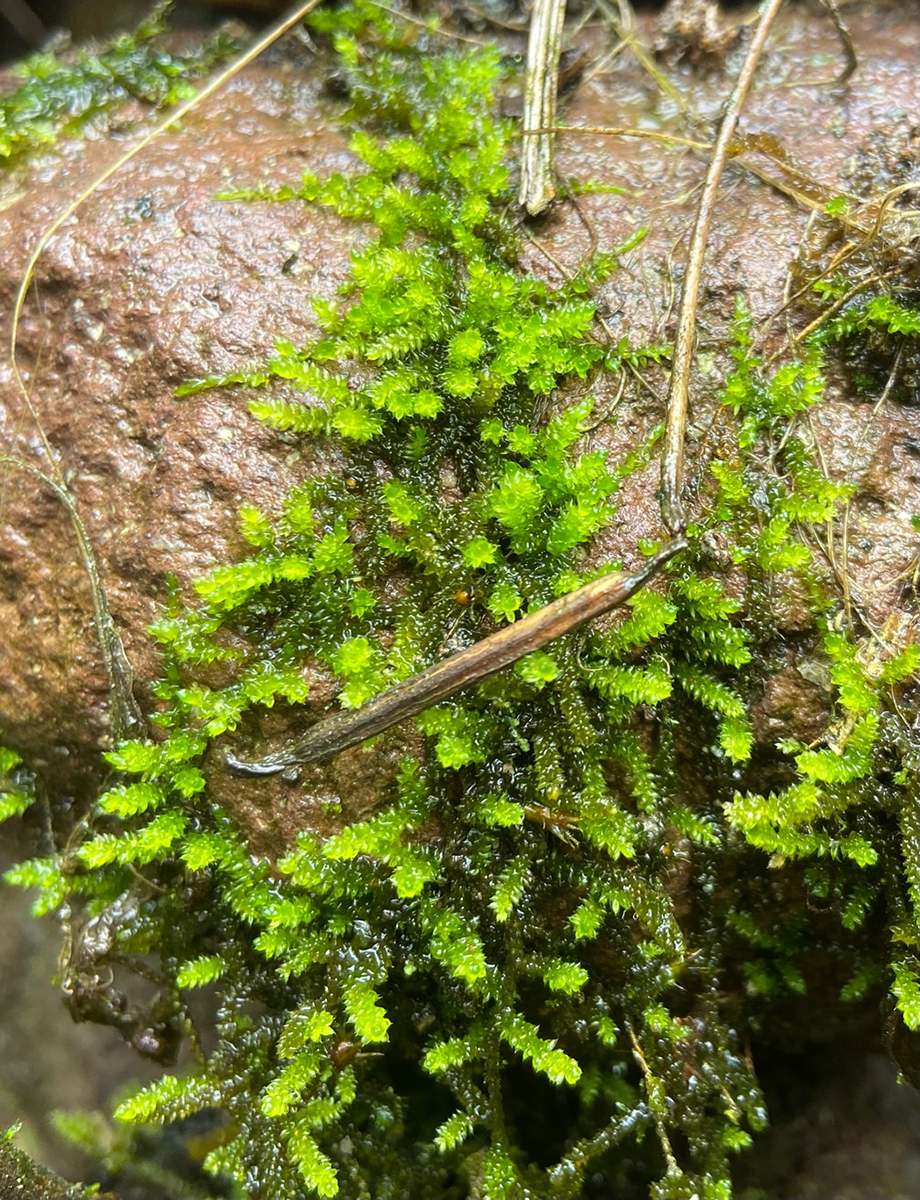
Results

12 families of mosses (15 genera, 5 species)
7 families of liverworts (8 genera, 3 species)
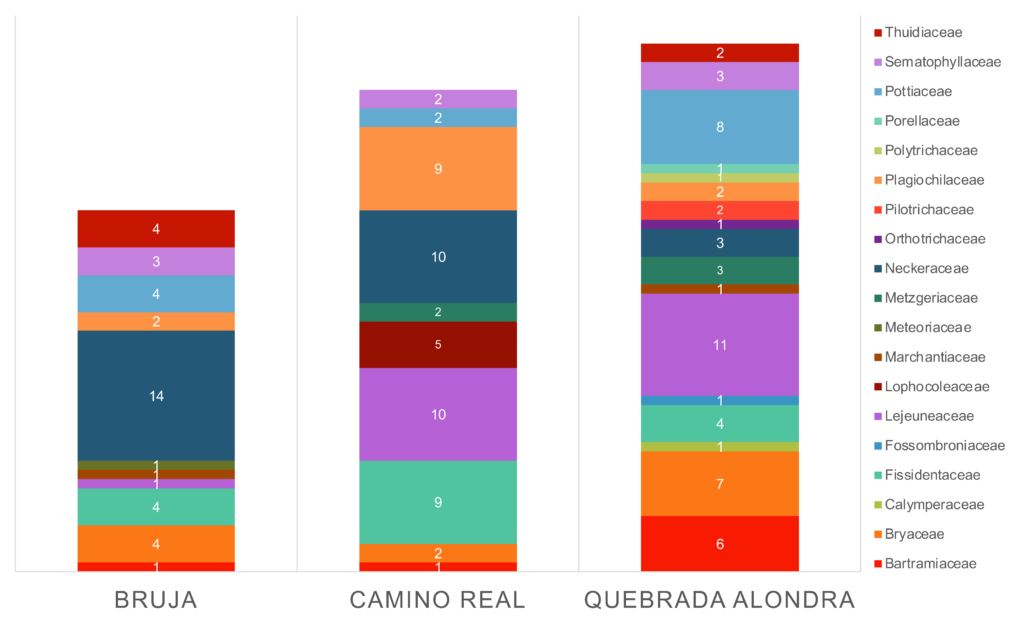

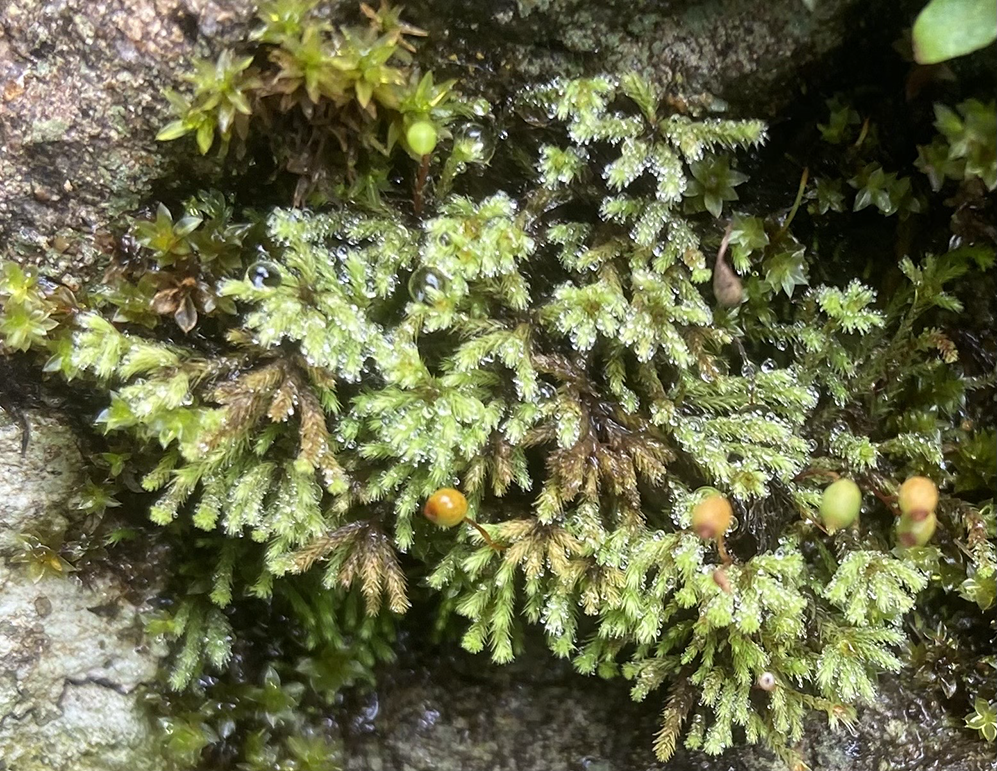
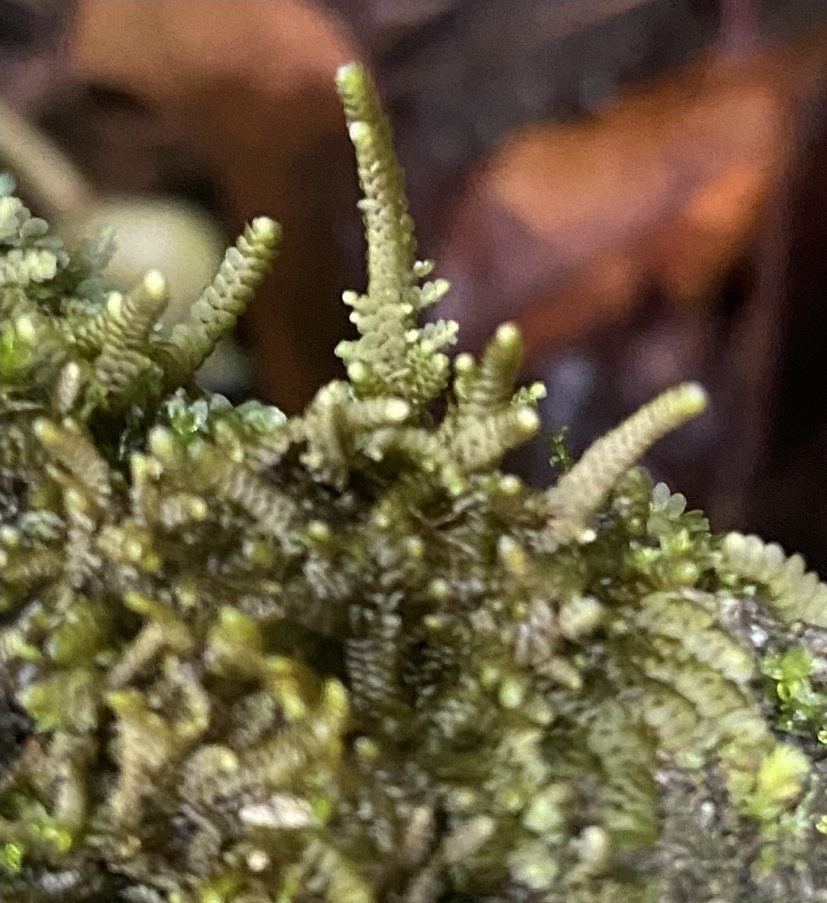

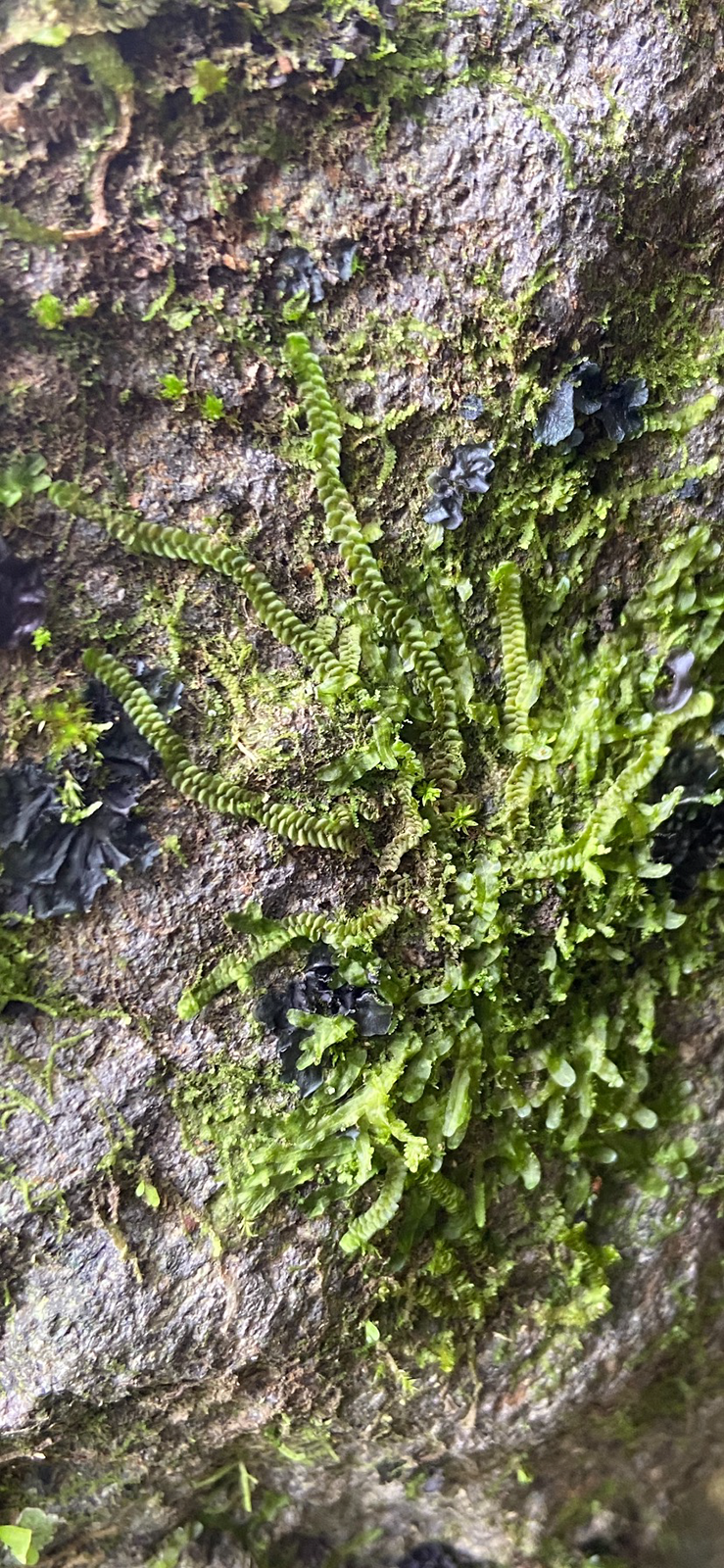
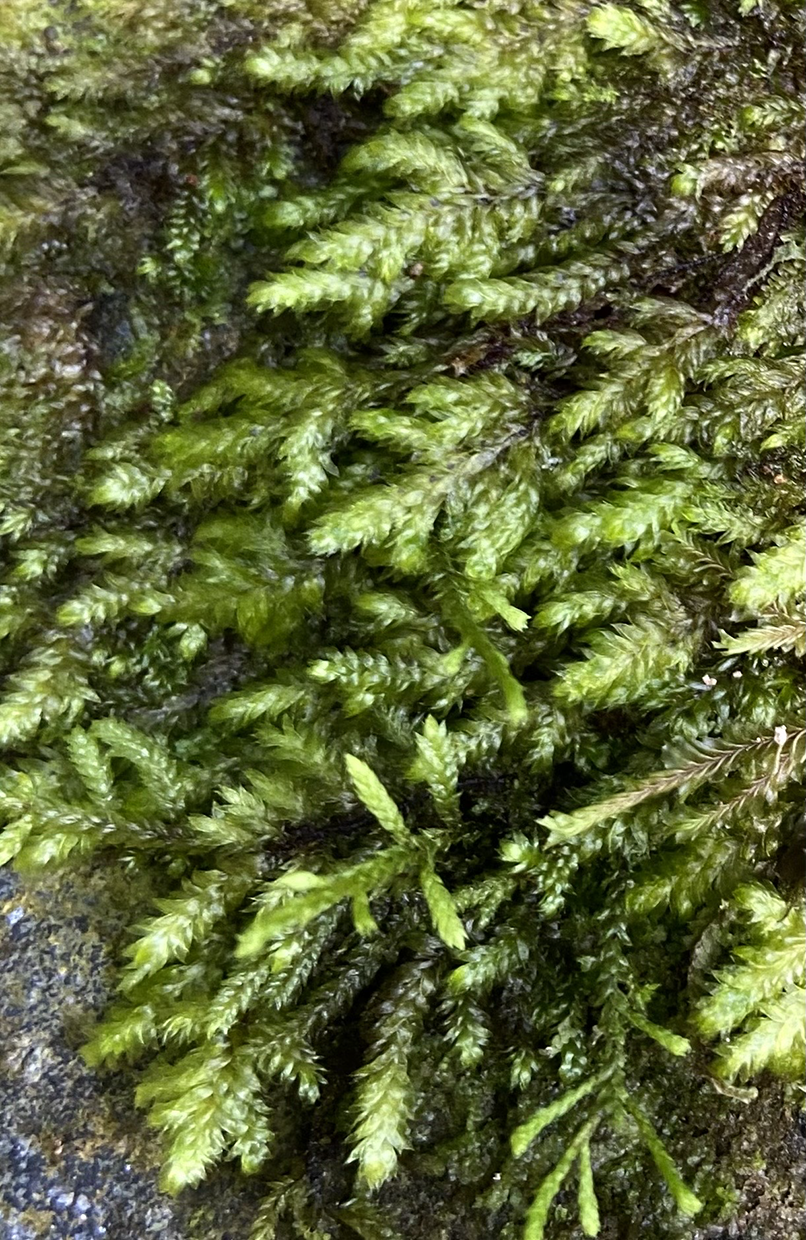

9 of 19 families were found at all three sites, but 6 were exclusively found in Alondra!
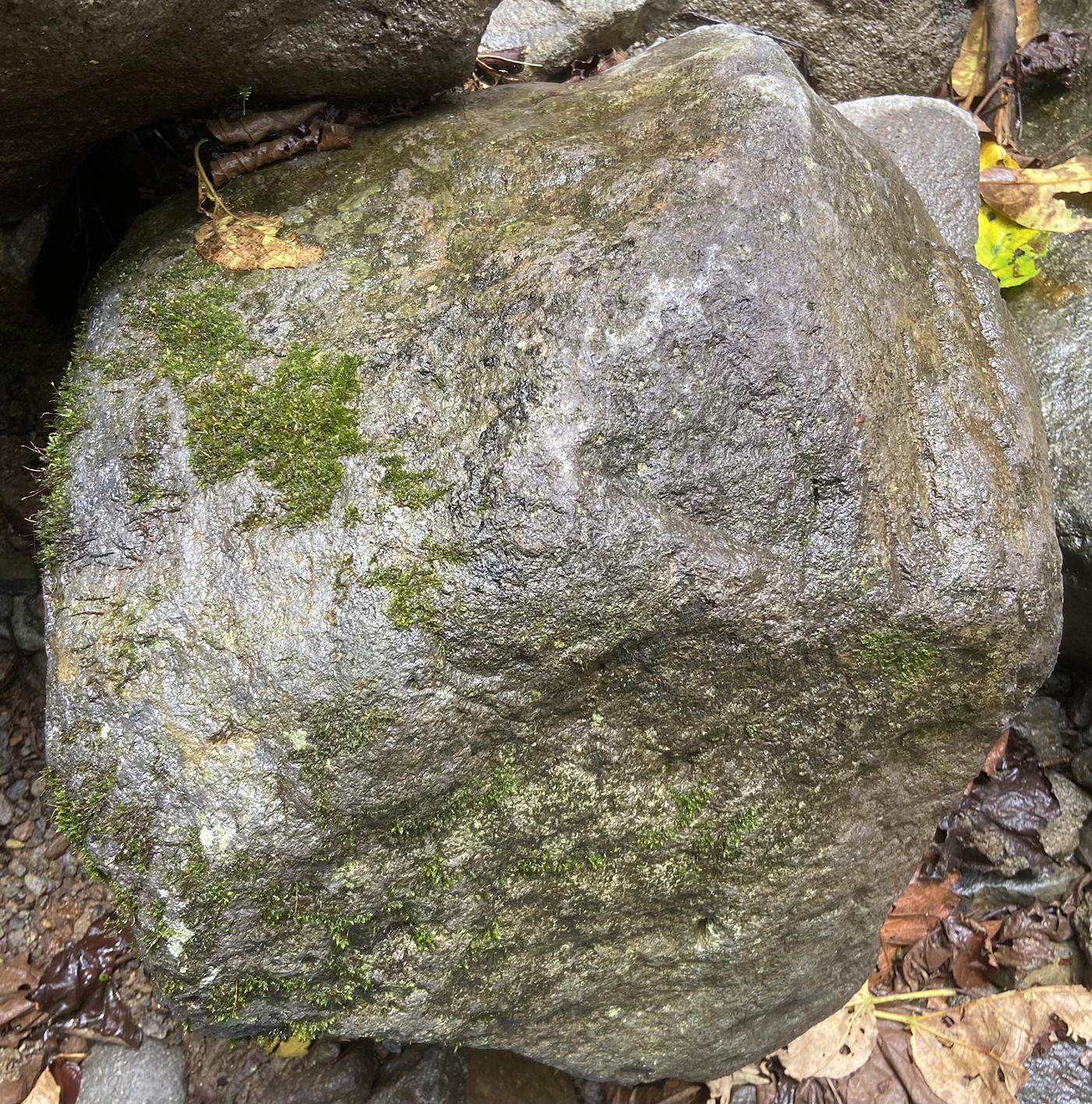
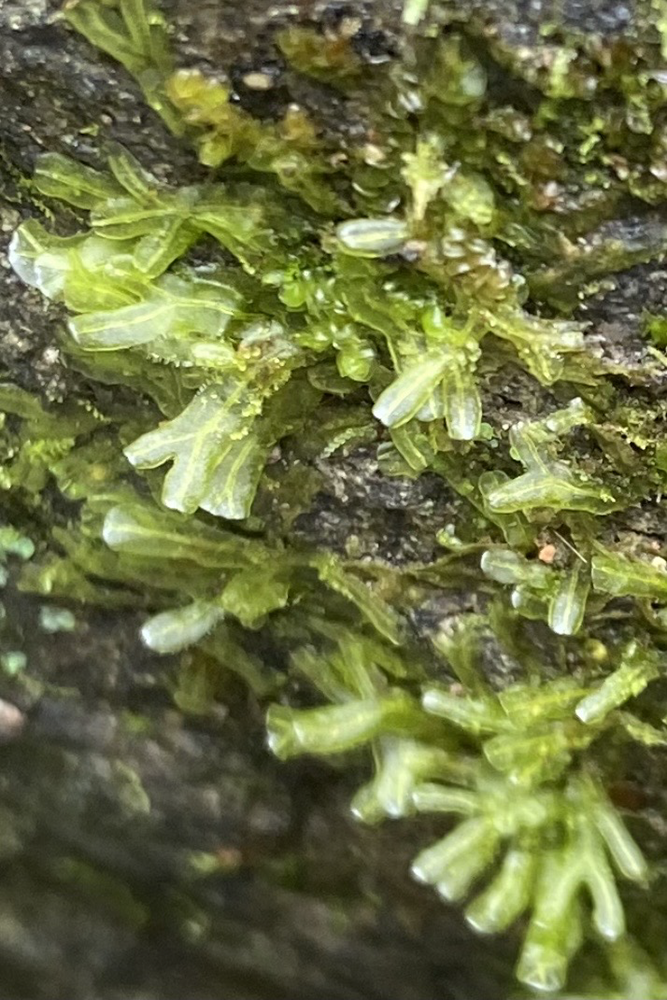
(Metzgeria furcata)
| Location | Family Richness | Family Diversity | Evenness | Number of Individuals |
|---|---|---|---|---|
| Bruja | 11 | 2.03 | 0.85 | 39 |
| Camino Real | 10 | 2.04 | 0.89 | 52 |
| Quebrada Alondra | 17 | 2.52 | 0.89 | 57 |

Alondra is seeing immense secondary regrowth after being heavily disturbed by Tropical Storm Nate in 2017. Alondra’s high species richness and diversity are in contrast with regrowth patterns in epiphytic moss, which can take up to 15 years to begin succession.
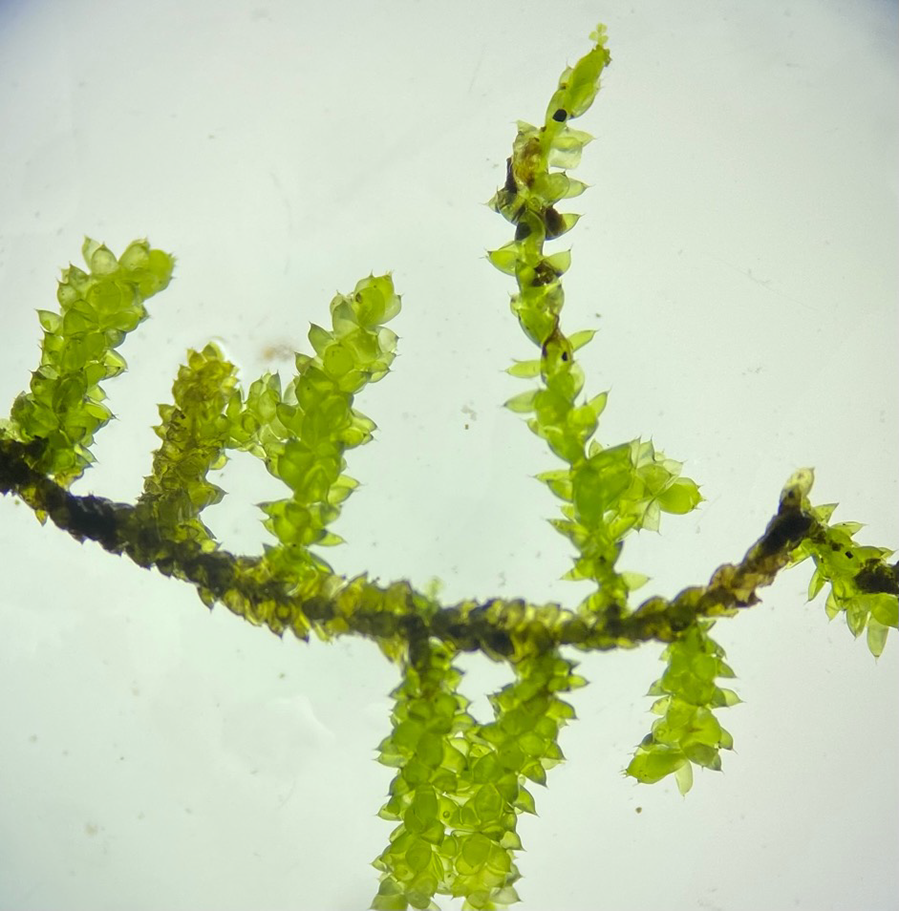
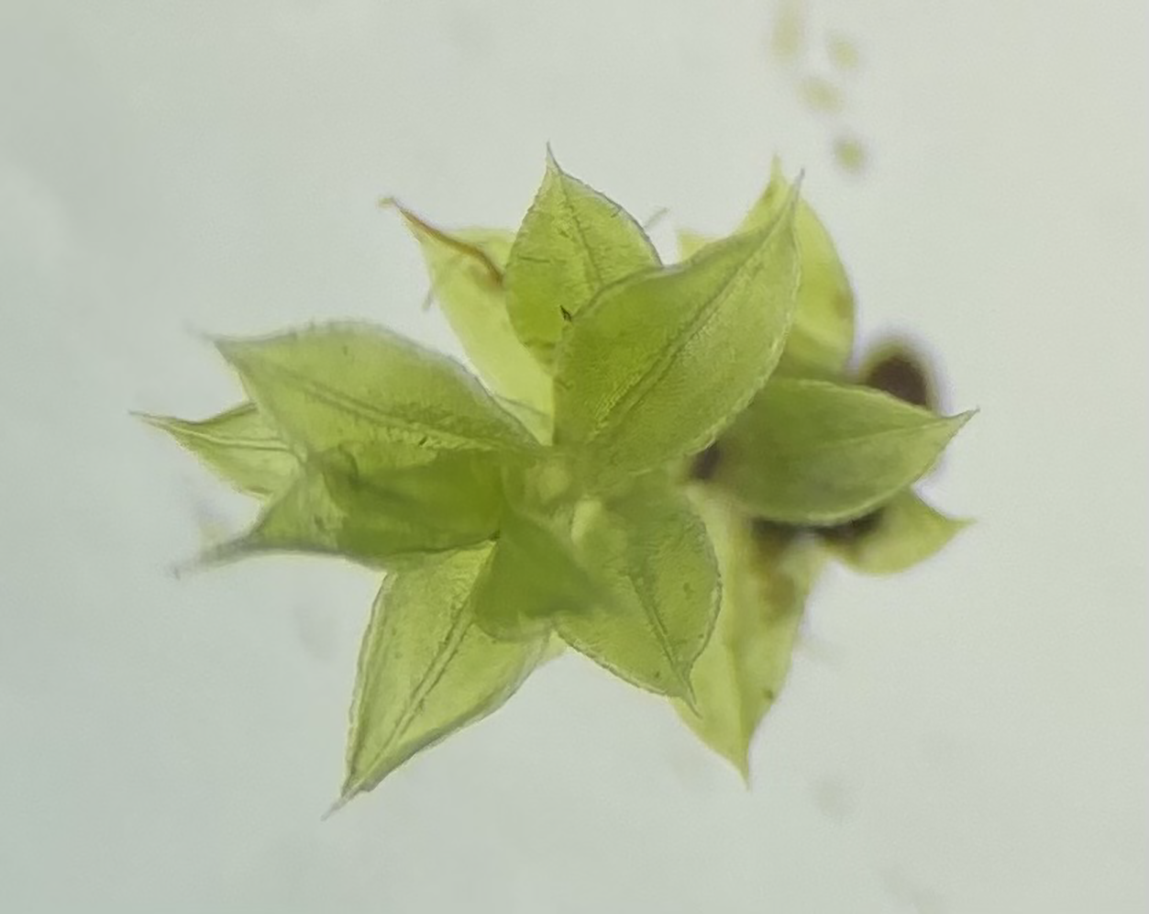

Conclusions and Future Direction
- There was a greater proportion of mosses to liverworts in riparian zones than non-riparian zones.
- Species richness and diversity are not influenced by boulder size or canopy cover.
- Camino Real (non-riparian site) exhibited the highest species evenness and the lowest species richness, making it the most stable. However, Alondra (disturbed riparian site) showed higher stability than Bruja (undisturbed riparian site).
- Alondra’s stability and richness in the face of a near-complete wipe-out support further research into the intricacies of bryophytic secondary succession in riparian boulder habitats.
- Understanding the secondary succession of riparian organisms such as bryophytes will become increasingly relevant as climate change progresses due to their importance in limiting runoff, filtering sediment, and reducing extreme flooding.
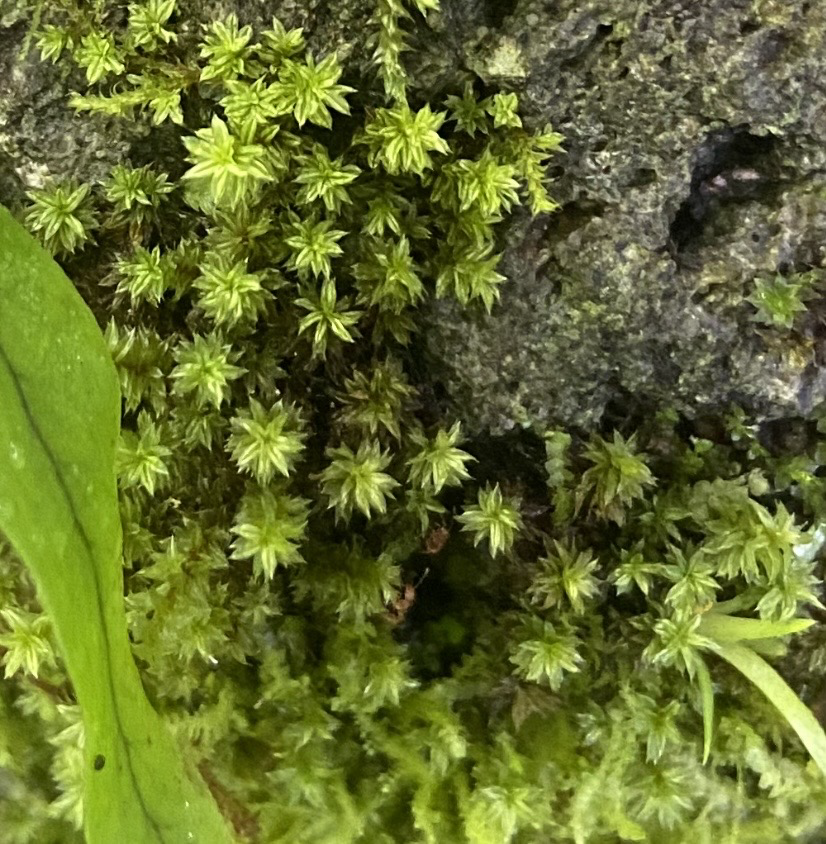
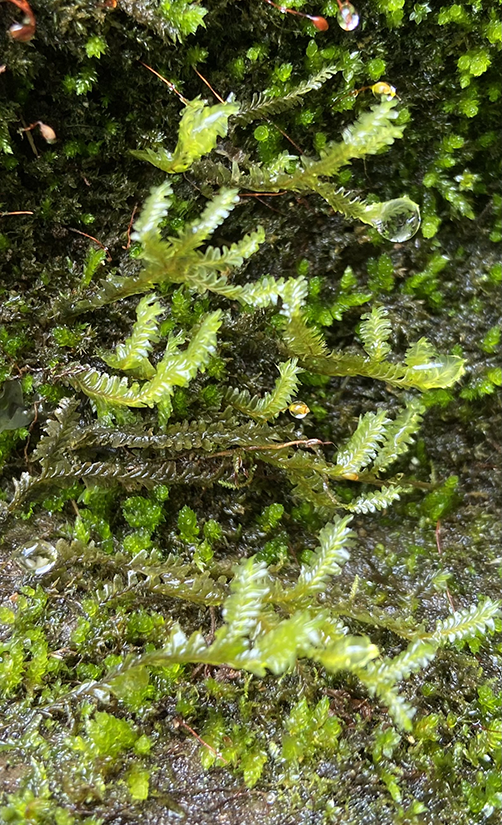
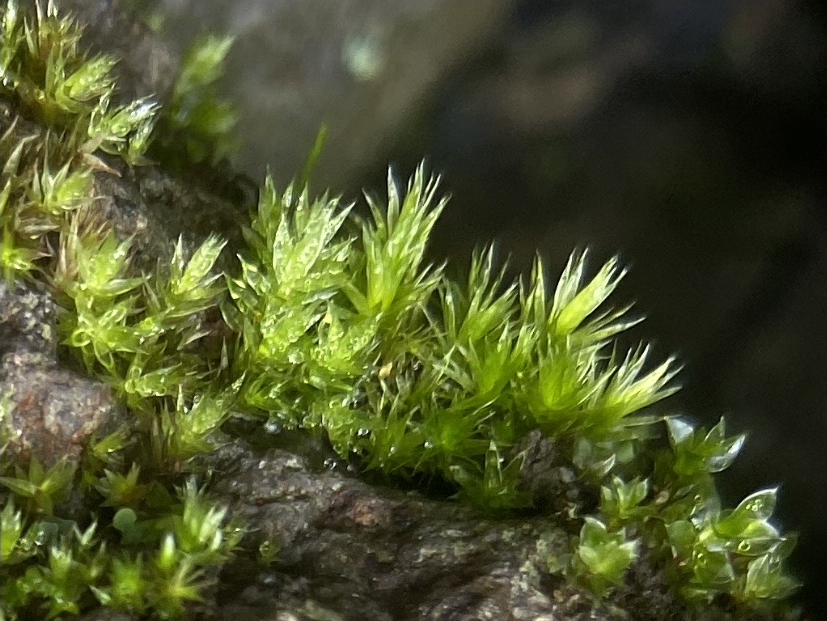
Acknowledgements
My co-author Amelia Merced for always answering my questions and giving me a greater appreciation for the study of bryophytes. Amanda Rugenski for being the most delightful person and helping me find my passion for fieldwork. CIEE for their rocks. Carolyn Cummins for help setting up my transects. Caroline Anscombe and Kate Moore for making sure I never injured myself too badly when I caused rockslides.
Contact
Download Original PDF of Poster
